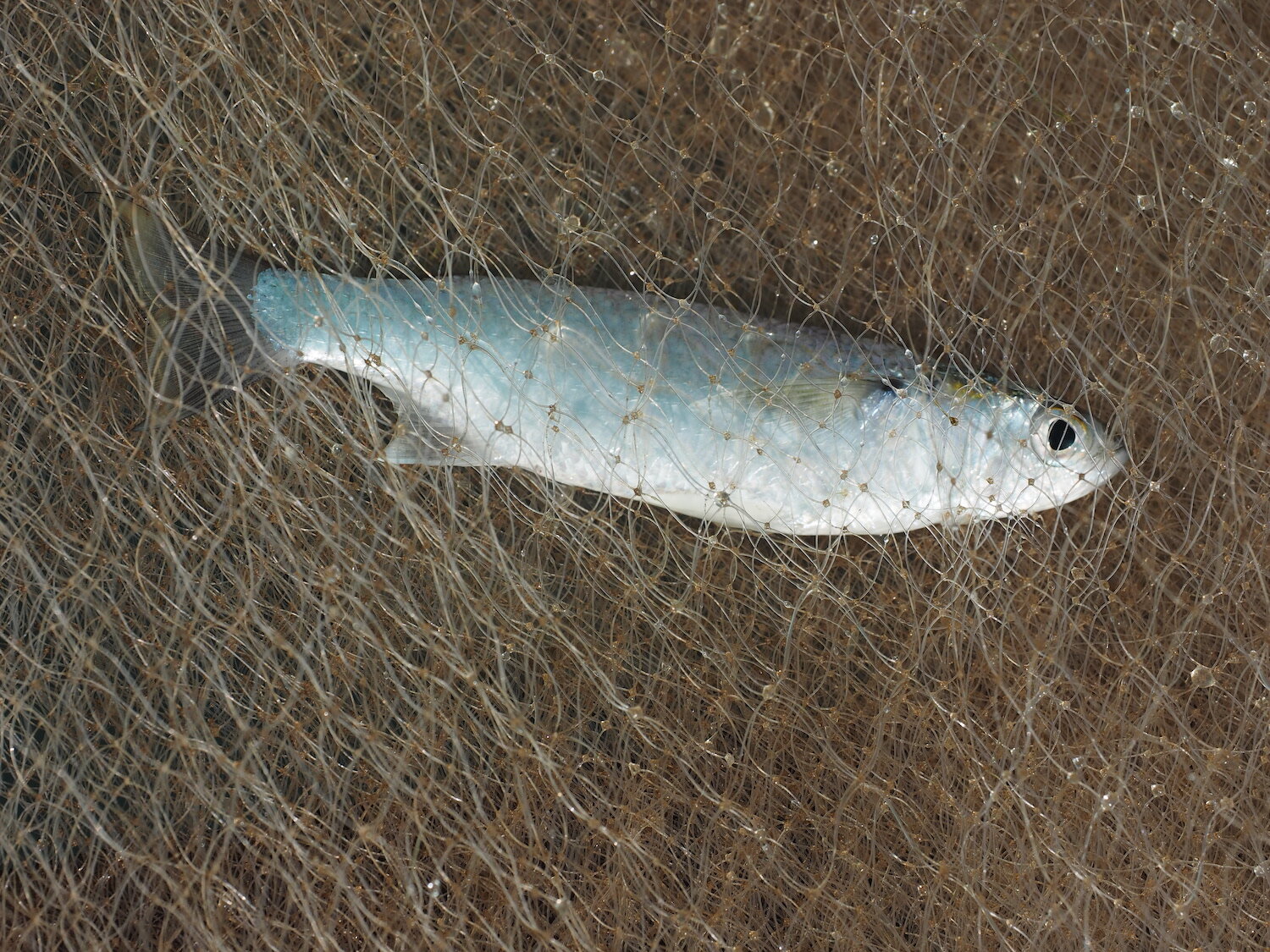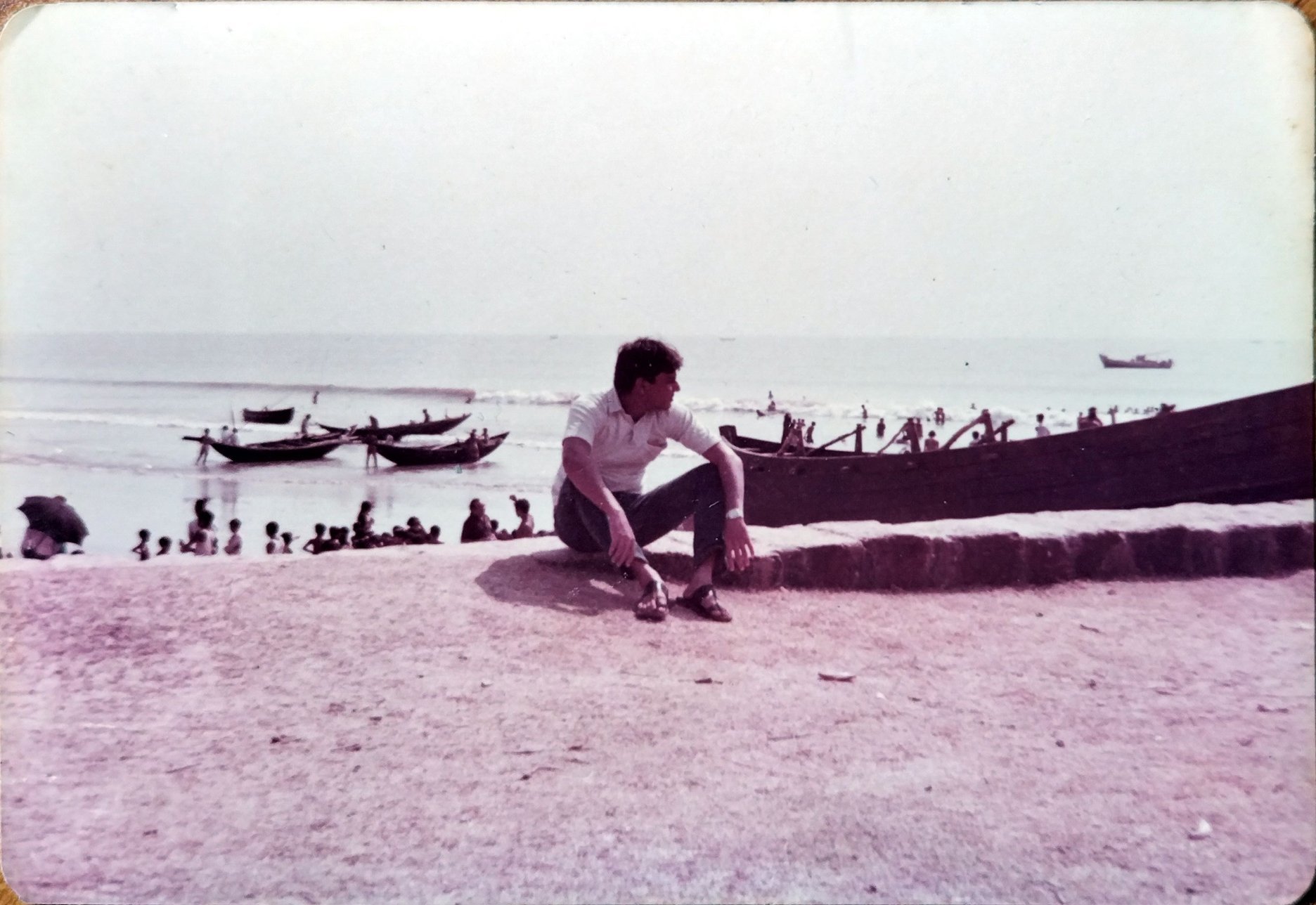Shevtto: The Story of Goa's Unlikely State Fish

The grey mullet is small and unremarkable in many ways. However, it is a quiet favourite among fish-eating communities the world over, writes Aaron Savio Lobo.
Shvetto or Grey Mullet
Simon, now in his late 30s, has been fishing since he was 9. He belongs to a Ramponkar family, the generic term for traditional fishers in Goa, a state along the west coast of India. The term ‘Ramponkar’ actually comes from the use of a particular fishing net — the Rampon, which is a beach seine; and ‘kar’ refers to the person who uses it. In Goa, the Rampons are set in sheltered areas, either near river mouths or along bays and coves, protected from the forces that offer refuge to a diversity of species who use these areas to breed and feed. These rampons, along with other traditional fishing methods, form the mainstay during the monsoon, when the rains are relentless across the state. This also happens to be a time when larger industrial fishing vessels, including the trawlers and purse seiners observe a two month fishing ban — a bid by the government to protect the rights of the less industrious traditional fishers, and to ensure that the ocean and the fish are given a break from aggressive fisheries. While the Rampon can bag an entire potpourri of species depending on the season and what visits the bays at the time, one that seems to be present (often dominating it) is the grey mullet.
Rampon In Goa
In 2016, Goa’s State Directorate of Fisheries decided to host a competition to choose a State Fish — a fish which was relevant, and would bring pride in some way to the people of Goa. The grey/flathead mullet (Mugil cepahlus) locally known (in Konkani) as Shevtto was voted the State fish of Goa from a long list of contenders. This came as a pleasant surprise. In India, species declared as state or national animals tend to have something iconic about them. They are either extravagant, like the country’s national bird, the Indian Peafowl; or exude power, like the Royal Bengal Tiger; or are rare and endangered like the Sangai, the Brow-antlered deer, a species known to occur on a single lake in Manipur. The mullet is none of these.
Shvetto or Grey Mullet in a net
Living up to its name, the mullet is coloured a drab grey above and silver below, something that characterises most ‘typical’ fish. There are in fact, several species of mullet in Goa, and they are all similar in build and colour, making it difficult to tell them apart from the grey mullet. There are also other fish that have the name mullet, but are actually not — the Red mullet is actually a species of Goatfish. So what makes the grey mullet so special?
A Fish That You Can Rely On
The mullet is one of the few ‘state animals’ that you can actually eat. And because it occurs from river to sea, it is accessible to a range of communities — enjoyed equally by ‘sweet-water’ fish-loving Bengalis, where it is called parse, and the ‘sea-fish’ loving Goans, for the very same reason that you cannot assign the mullet to a specific ecosystem. The mullet is caught year-round using a diversity of fishing craft and gear. The grey mullet has many local names depending on which part of the coastline you visit. Called madava in Tamil, thirutha or kanambu in Malayalam, khainga in Odia, farsa in the Andamans, the mullet is savoured pretty much throughout the Indian coastline, with each coastal state replete with its own variety of recipes to prep and cook this fish. The fish also has specific names based on its size, and whether the locals believe it is male or female. In Goa, while shevtto generally refers to the large mullets, shevttali refers to smaller specimens. A friend from a coastal village in Maharashtra, who is a fisher, told me that although the grey mullet is known by the generic Marathi name boitt, they have different names as they grow into larger specimens — sherwa is used to describe what are believed to be large males, while large females with roe are called badwi. After all, a lot of folk taxonomy is based on the functionality of the species, as well as whether you can eat it or not. Its relative abundance and fairly low price make the grey mullet accessible to everyone.
Vendor selling mullet among other backwater fish in Goa
Being a fish of the surface waters, the mullet is commonly caught using cast nets. This technique requires both stealth, speed and a knack to cast the net! While fishing for mullet, there exists an ‘arms race’ between the fisher and this keen-eyed fish, which generally swim in small shoals of five or six, and is able to spot the slightest of movements. This wily fish will not readily take to the hook either. In Goa, small pieces of Goan Pão (Portuguese for bread) are tossed in the water, and as the fish gradually feel comfortable, a line with bread baited hooks is cast. The mullets, in their feeding frenzy, take the bait this time! Both casting nets and angling for mullet require skill, and thus the success rates can vary tremendously between anglers. But then, mullets are also caught in other less selective techniques such as stake sets, gill nets, bag nets and beach seines. Interestingly, destructive trawl fisheries, that drag nets along the sea floor, rarely catch mullet because they are primarily surface water dwellers.
Cooking And Eating
The mullet primarily feeds on plankton, small aquatic invertebrates and insects that accidentally drop into the water, which suggests that this species is lower down the marine food web, referred to as a lower trophic species. This contrasts with large predatory fish (higher trophics) that co-exist with it, including the Malabar grouper, Asian sea bass, Mangrove red snapper and barracuda. Mullet are also known to sexually mature relatively early on, and lay millions of eggs, which allow the fish to withstand fishing pressure, and their population bounces back faster than their predatory counterparts. As a rule of thumb, for those concerned about eating sustainably, species that are lower down the food web such as the grey mullet are more sustainable to consume than species that are higher up.
Like many other fish, the shevtto’s taste is strongly flavoured by the seasons, and the waters it inhabits. Goans complain that mullet caught near the mouth of the Mandovi river smells and taste of kerosene oil, presumably due to the high levels of boat-related pollution in that area. However, mullet from the backwaters and the associated salt pans (Agors) are said to be delicious. My mother herself refrains from buying mullet during the monsoons. She maintains that the flavour of the mullet is diluted by the rainwater. And perhaps this has to do with the significant drop in the salinity during this season.
One is not likely to encounter this fish on menus in beach shacks or upmarket restaurants. However, you might find it in a few small village bars — after all, this is the fish of the common man. These places will serve shevtto rava (semolina) fried, and if you’re in luck, you may chance upon a female with delicious roe!
Owing to its global distribution, it is no surprise that this fish is integral to many cuisines. In Sardinia, the air-cured roe of the grey mullet, called Bottarga, is used as a replacement for bacon in the Italian version of Spaghetti Carbonara. Bottarga is proudly known as caviar of the Mediterranean, and has two main sources: Bottarga di muggine (of the mullet) and Bottarga di tonno (of the tuna), the latter Sicilian in origin. Interestingly, people of Italian descent living in parts of Florida, have started a fishery for the grey mullet, particularly for its famed Bottarga. Greek mezze platters are incomplete without Taramasalata, a pink dip made with the cured roe of grey mullet, although it is often replaced by the roe of other fish, including carp and cod.
The Ludong or the Lobed river mullet (closely related to the grey mullet) of the Philippines is referred to as President’s Fish, because one of the country’s late Presidents. Ferdinand Marcos, is said to have favoured a dish prepared with this fish. This species only occurs in the waters of the Cagayan river and its tributaries, and is arguably the country’s most expensive fish, worth approximately US $100/ kilo. The ludong has been heavily depleted, and currently a captive breeding programme is underway to cater to the heavy demand this luxury exerts.
On a recent trip to Egypt, I had the opportunity to try fesikh, the cured, albeit putrid smelling bouri — grey mullet in Arabic. This is definitely not a dish for the faint hearted and I ate mine in a traditional Egyptian home, prepared with finely chopped onions and lemon juice which made it more palatable. Fesikh is mainly consumed during the days of fasting, particularly during Sham el Nessim, which is a festival celebrated the day after the Coptic Orthodox Easter. Bouri is generally harvested during spring and summer, when the waters of the Nile recede, leaving these fish stranded in drying pools. Today, Egypt is a world leader in mullet production, primarily from capture-based aquaculture. In the Nile Delta region of Egypt, mullet seed (baby mullet) are harvested in the wild and grown in ponds specially dug for the purpose. Fesikh is prepared by drying and then submerging the fish in large wooden vats of strong brine meant to cure it. If not cured well, that is, without adequate salt and enough time, the fish can get infected with the bacteria Clostridium botulinum, known to cause food-borne Botulism and death by respiratory failure. Egypt apparently witnesses a few fesikh related deaths every now and then, and in 2018, two near-fatal cases of Botulism were reported in New Jersey; an Egyptian mother-daughter duo had eaten fesikh they had cured and prepared themselves.
One hungry morning, nearly two decades ago, working as a field researcher on an uninhabited island in the Gulf of Mannar, my field assistant Andi, with his cast net slung over his shoulder, waded into the knee-deep waters of a seagrass meadow. He scanned the surface carefully and cast his net with practiced ease. Andi landed an entire shoal of 4 large mullet and that morning we filled our bellies with mullet cooked in sea water, rice gruel and some fried salt fish. Shevtto was around when I most needed it.
We often ignore the small and common in favour of the large and glamorous. However, it is the small and everyday fish that play a significant, albeit disproportionate role in sustaining life in the waters they inhabit, and the communities they support. Small fish are nutritionally dense and other than the central bone, you can enjoy the entire fish — head, gills and all. Often these parts are high in essential micronutrients which are not consumed as often in larger fish. Most of all, shevtto is a fish that is accessible to the common man and coastal communities globally. It is a fish I am proud to celebrate as my State Fish.
Aaron Savio Lobo is a marine conservation scientist, and a member of the IUCN SSC Marine Conservation Committee. You can follow his work here.
Banner illustration by Krishna Balakrishnan.
All photographs by Aaron Savio Lobo.
ALSO ON THE GOYA JOURNAL











